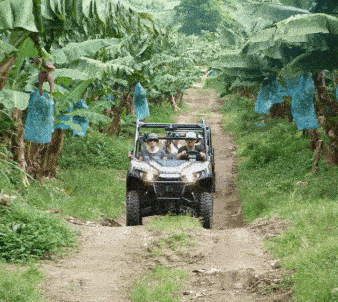This phenomenon appeared in May/June 2011 and disappeared in October of the same year, massively invaded the coasts of Martinique. A phenomenon that has been repeated every year for 10 years at the same time, but three important periods qualified as crisis have been retained in particular in 2011, 2014-2015 and 2018-2019. Its color and its strong nauseating odors that emanate do not leave you indifferent. Thus, many of you are wondering about the origin of sargassum, their level of danger, the precautions to take.
What is sargassum?
Sargassum is a brown algae, scientifically called sargassum. The deposits can measure one meter thick and allow marine species, especially turtles, to find their food and to protect themselves from predators. This algae lives essentially on the surface of sea water and proliferates massively in tropical waters.
Where does Sargassum come from?
You might think that Sargassum comes from the Sargasso Sea, but this is not the case this time. In fact, according to a study conducted by the CNES in 2018, significant aerial and satellite resources were deployed to study the hypotheses on the origin of these algae that wash up on Martinique's beaches.
Some scientists have studied the path of sargassum through satellites and have shown that they would come from the north of the mouth of the Amazon, off Brazil, it seems that banks of sargassum are also formed from West Africa, at the mouth of the Congo and are brought by the current on the Caribbean coast.
You must be wondering, what does this have to do with the Amazon? It turns out that the Amazon has been undergoing deforestation in recent years, especially 2015, giving way to farmers who use fertilizers and pour into the water.
Scientists add yet another hypothesis on where the sargassum comes from, it would be because of ocean warming.
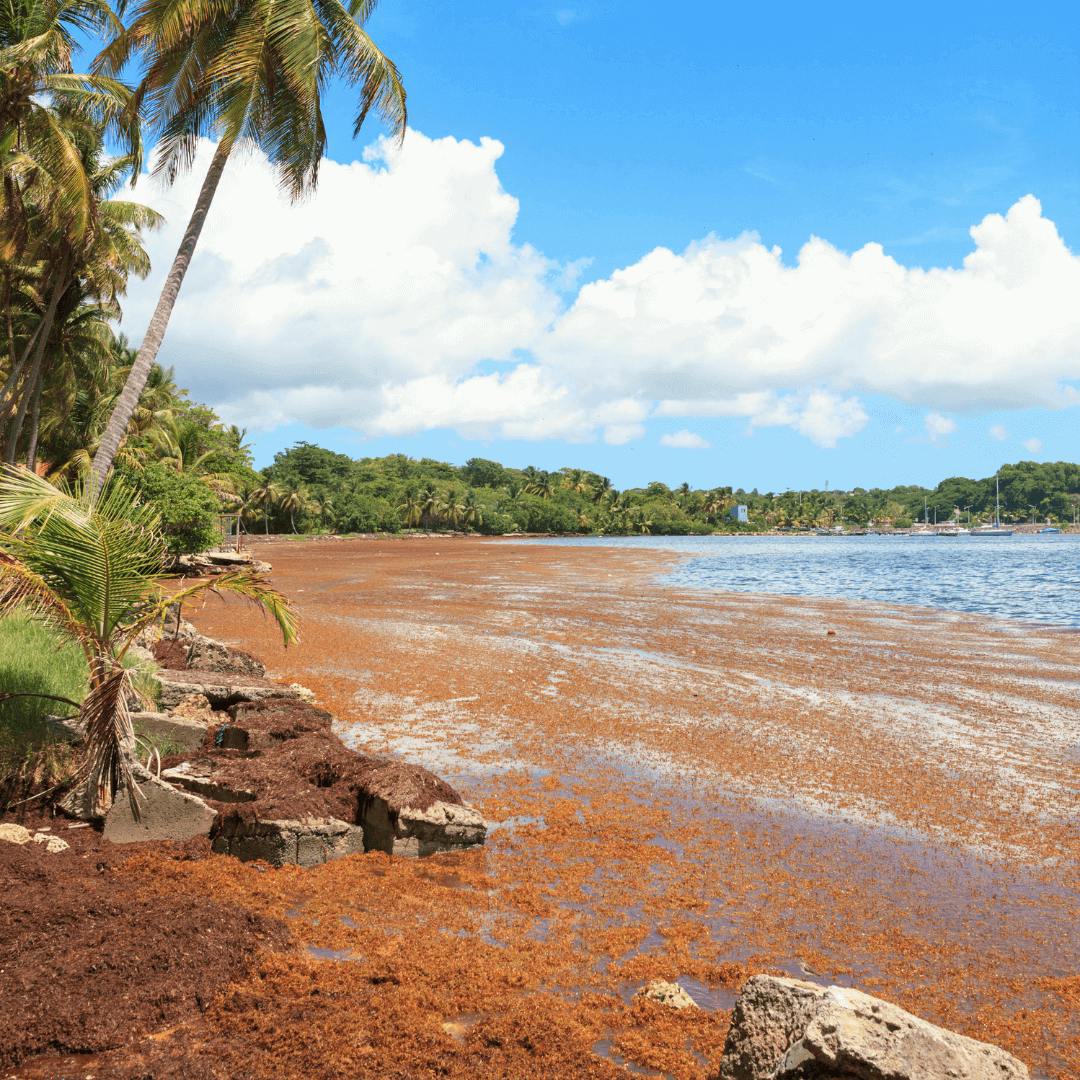
What are the material, economic and health consequences of sargassum in Martinique?
Many of you were surprised to see this arrival of algae in quantity in 2011; you did not expect to see so much, and you did not know the disastrous repercussions as well material, economic and especially on your health. If in water, these algae does not represent any danger, because they are neither allergenic nor stinging nor poisonous; on land, they strand on the edges of the beaches forming a heap, dried, release a H2S gas which is similar to the smell of "rotten egg". You might as well say that the smell is very unpleasant.
Your personal and professional effects damaged by sargassum
Some inhabitants have noticed during the appearance of these algae, the degradation of any object with electronic components (refrigerator, television, computer, ...) inside their home moreover even the faucets were not spared.
Also, any material built with iron, copper, silver is attacked because of the corrosion that infiltrates everywhere.
Others have seen their professional equipment deteriorate because of the presence of sargassum near their sailboat activity. One of the professionals delivers his testimony in the media - The Observers -
"The sargassum is putting a strain on my nautical activity"
"The municipal team of the commune of Sainte Anne cleaned one of the beaches of Sainte Anne, but the sargassum was piled up near my sailing club. Because of the harmful effects, we noticed after a few weeks that our nautical equipment is deteriorating.
Temporarily, I can continue my activities on another beach during the summer. In the fall, I will have to return to the other beach. Knowing that the new sailing season starts in September, for the moment I cannot inform my clients and future clients about the possible activity or not. The sargassum puts my nautical activity at risk".
Emeline, manager of a sailing club in Sainte-Anne, Martinique.
Your business is threatened by sargassum
The restaurant owners also suffer and are powerless against these sargassum, which ruin their daily lives and disrupt their business. Indeed, many restaurants are located near the beaches very popular with the Martiniqueans and tourists. Very few want to come and eat there to breathe this very unpleasant smell.
Obviously, these strandings have an impact on tourism and the lack of attendance of Martinique, because many beaches are impacted by this phenomenon.
All professionals impacted by sargassum have questioned the elected officials of Martinique who in turn informed the Minister of Overseas in 2015 (George-Pau Langevin), of the invasion of these algae. These steps were intended to be recognized as a natural disaster, unfortunately the sargassum file does not meet the criteria defined by the Ministry of the Interior. So professionals can not be compensated by their insurance.
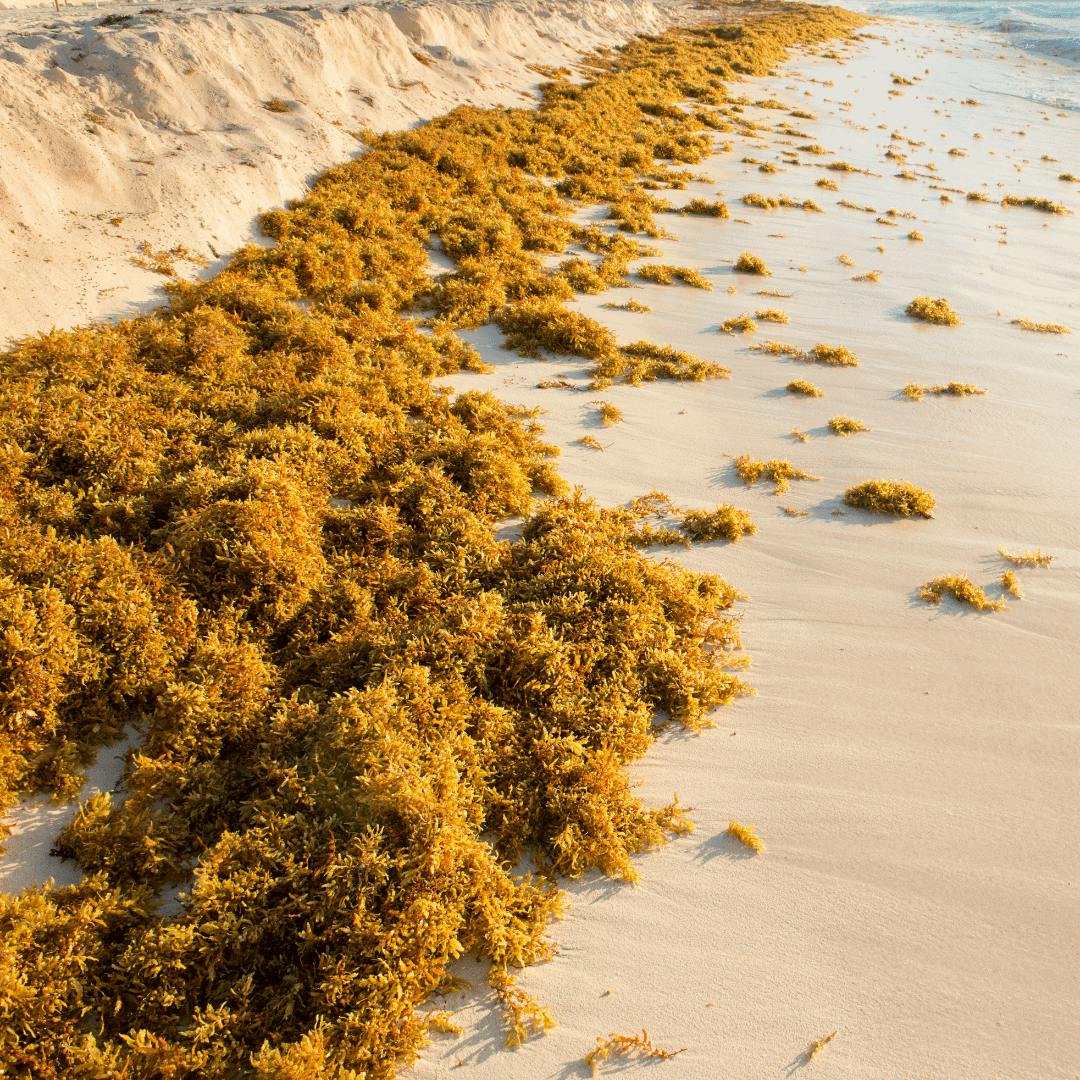
Your health is at risk from this sargassum
And your health in all this? Many people have complained of stomach aches, headaches, nausea, reduced vision. But not only, the Regional Health Agency of Martinique has identified other consequences such as irritation of the eyes and respiratory tract.
If you are part of the vulnerable people (elderly people over 65 years, pregnant women, infants, young children, people suffering from respiratory pathology, cardiovascular, ...) you are advised not to frequent the beaches invaded by sargassum.
If you have symptoms that persist, you can consult your general practitioner.
On the table below, you will find the health recommendations:
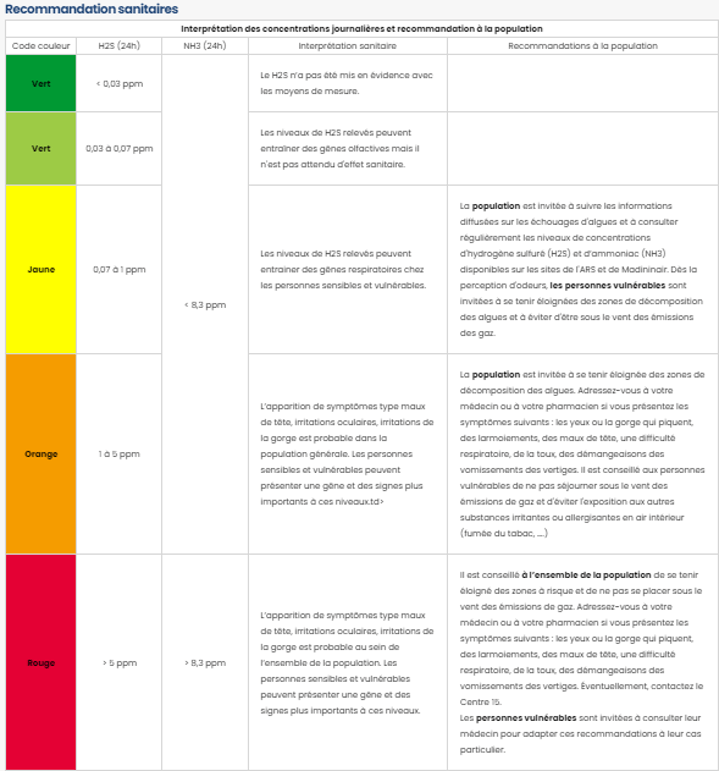
Source Madininair
Martinique is impacted by sargassum.
Some communities in Martinique are more impacted than others by the presence of sargassum.
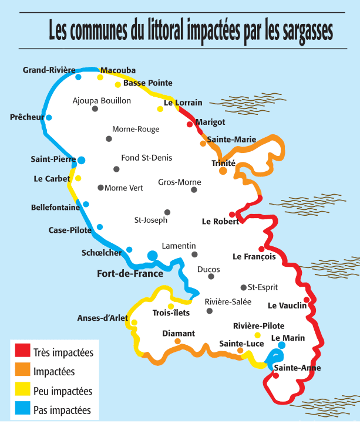
Source France-Antilles Martinique
Faced with this phenomenon, the mayors are trying to find solutions to remove these algae. The mayor of Le Diamant has put into action a backhoe and a hydraulic shovel, but faced with this invasion these means seem derisory.
Two brigades have been created in this same commune, with a total of twenty people collecting the algae on a daily basis, but this is still insufficient.
The local elected officials do not admit defeat, because they always try to find a solution to limit the damage. This is also the case in Robert, and in the North Atlantic as in Marigot, where the town hall has decided to test two devices, one is made of plastic tanks and wire mesh, a device devised by their own department. Their location is strategic because the goal is to direct them to the waterfront where the machines can remove them more easily.
This phenomenon is to date continuously not recognized as a natural disaster, it is a problem that must be managed by the mayors.
Moreover, since 2019, on the website of the DEAL (Directorate of Environment, Development and Housing) of Martinique, you have access to the bulletin of forecasting sargassum strandings. A bulletin is published on average every 7 days, it allows you to have a visibility and anticipate these rafts of sargassum.
